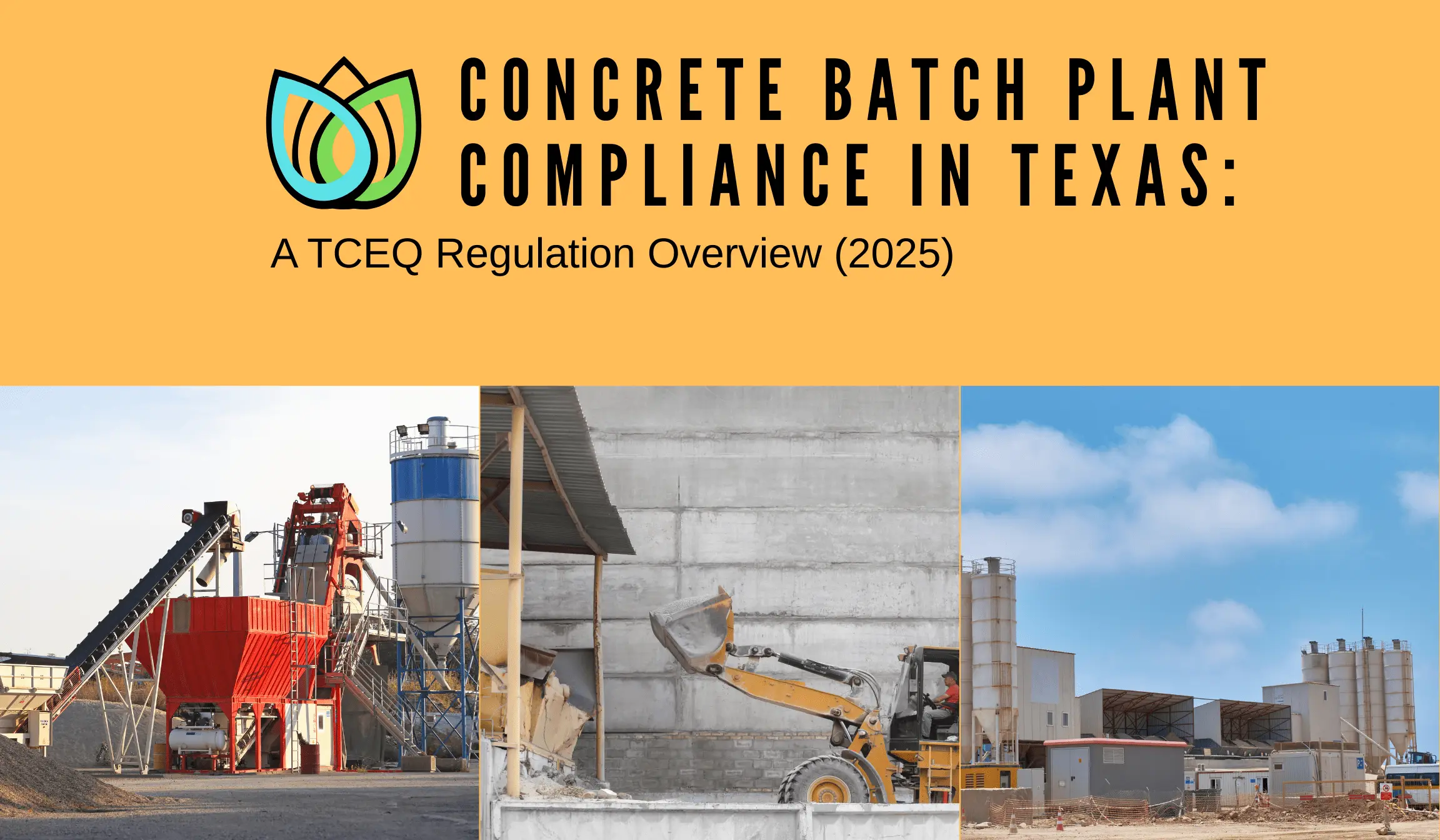A COMPREHENSIVE GUIDE FOR FABRICATORS
Mastering Environmental Compliance: A Fabricator's Guide to TCEQ Regulations
For Texas metal fabricators, true compliance goes beyond a single permit. It's an integrated strategy covering stormwater, air quality, and waste management. This guide provides the expert insights needed to navigate the full scope of TCEQ regulations.
The Three Pillars of Environmental Compliance
A metal fabrication facility isn't one single entity in the eyes of the TCEQ. It's a collection of distinct activities, each falling under one of three core compliance pillars.
The High Cost of Non-Compliance
Per Day, Per Violation
TCEQ fines under the Texas Water Code can escalate rapidly, turning a minor oversight into a major financial liability.
Operational Shutdowns
Enforcement actions can halt facility operations, leading to costly downtime, project delays, and lost revenue.
Reputational Damage
Environmental violations can harm client relationships, public perception, and your company's standing in the community.

Are You Prepared for an Unannounced Inspection?
A calm, organized response can make a significant difference in the outcome of a TCEQ visit. Use our detailed guide to know the protocol before an inspector arrives.
Pillar 1: Stormwater & The Two-Layered MSGP
Under the TPDES Multi-Sector General Permit (MSGP, TXR050000), your facility must comply with both the permit's general requirements and the specific rules for Sector AA: Fabricated Metal Products.
🌍Layer 1: General Requirements
- Universal Mandates
- These apply to everyone under the MSGP and include quarterly inspections, employee training, and good housekeeping.
- Hazardous Metals Sampling
- Annually, you must sample for Total Copper, Lead, and Zinc, unless you have a valid waiver on file with the TCEQ.
⚙️Layer 2: Sector AA Specifics
- Activity-Based Monitoring
- Your site activities dictate additional monitoring. Exposed galvanized steel triggers Zinc sampling; exposed carbon steel triggers Iron sampling.
- Key Principle
- Your SWPPP must identify every material and activity exposed to rain and address the specific pollutants associated with them.
Pillar 2: Air Quality & The Mosaic of PBRs
A fabrication shop is not one air emission source, but many. You must claim and comply with a separate Permit by Rule (PBR) under 30 TAC Chapter 106 for each distinct activity. Failure to do so means operating without authorization.
Welding & Cutting
`106.227`
Requires tracking material usage to prove emissions are below thresholds.
Abrasive Blasting
`106.452`
Mandates enclosures and no visible emissions leaving the property.
Painting & Coating
`106.433`
Limits material usage and requires specific application methods (e.g., HVLP).
Parts Cleaning
`106.454`
Has strict operational rules, like keeping lids closed on degreasing units.
Pillar 3: Waste Management & Generator Status
All waste streams must be properly characterized, stored, and disposed of according to 30 TAC Chapter 335. Your obligations are determined by the amount of hazardous waste you generate each month.
Hazardous Waste
Includes many solvents and paint thinners. Requires strict labeling, storage time limits, and manifesting.
Industrial Solid Waste
Includes non-hazardous materials like used absorbents and grinding dust. Still subject to disposal regulations.
Recyclable Materials
Clean scrap metal and used oil. Proper segregation is key to maximizing value and ensuring it's not mismanaged.
Frequently Asked Questions
What is the difference between General and Sector-Specific stormwater requirements?
General Requirements (like annual hazardous metals sampling and quarterly inspections) apply to ALL facilities under the MSGP. Sector-Specific Requirements (like monitoring for iron or zinc) are additional rules based on your specific industrial activities, such as those for metal fabrication under Sector AA.
Can I use one Permit by Rule (PBR) for all my air emissions?
No. A fabrication shop is a collection of different emission sources. You must claim and comply with a separate Permit by Rule for each distinct activity, such as welding (106.227), abrasive blasting (106.452), and painting (106.433), and ensure your total site emissions do not exceed aggregate limits.
Does storing galvanized steel outdoors require special attention?
Yes. Under MSGP Sector AA, outdoor storage of galvanized materials is a primary trigger for benchmark monitoring for Total Zinc. Due to the low benchmark value (0.117 mg/L), controlling zinc runoff is a critical compliance challenge for many fabricators.

Navigate Your Environmental Compliance Program with Confidence
Peace Environmental provides turnkey environmental compliance solutions for Texas metal fabricators. From developing integrated SWPPPs to managing air permit recordkeeping and waste programs, we handle the complexities so you can focus on your business.
Get Your Free Consultation

